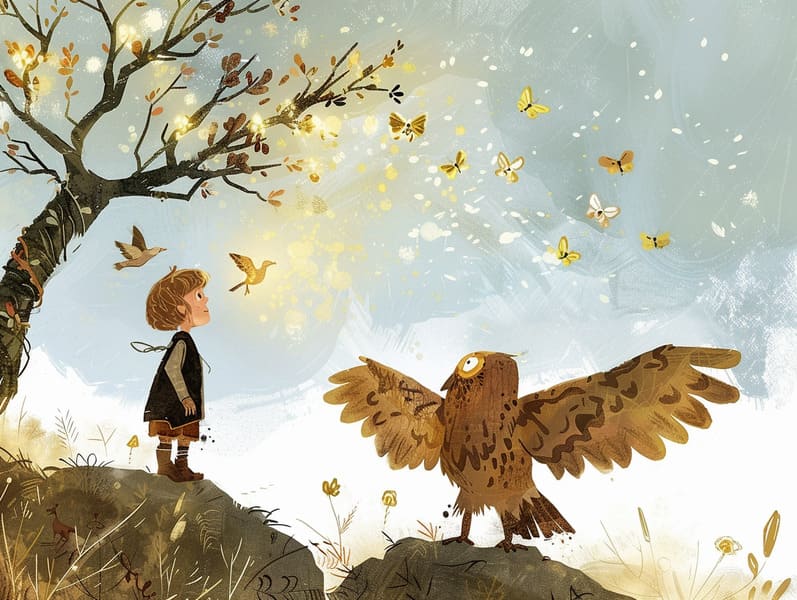The Rise of Traditional Fairy Tales and Their Timeless Grace.
The Rise of Traditional Fairy Tales and Their Timeless Grace.
Blog Article

Famous fairy tales have deep roots. These narratives have been whispered from one generation to the next far before they were ever written down. They sprang from a variety of cultures, including Indigenous traditions. They were initially narrated among grown-ups, often carrying themes and messages related to the societal norms and beliefs of the time.
The Brothers Grimm, Jacob and Wilhelm, were among the first to collect and release many of these beloved tales. Their volume, "Grimm's Fables," included classics like "The True Bride," "Hansel and Gretel," and "Schneewittchen," which have since become pillars in the world of timeless fairy tales. Similarly, Hans Christian Andersen's fantastical stories, such as "The Sea Maid," and "The Duckling's Story," have captivated hearts worldwide, cementing their place in the pantheon of iconic fairy tales.
Despite being ancient, these stories remain as pertinent as ever, especially as kids' bedtime tales. These enchanting tales are now available in many formats, including beautifully illustrated books, whimsical animations, and online storybooks.
Their lasting presence can be attributed to several charming aspects:
Significant Morals: Traditional fairy tales often share important moral lessons. Tales like "The Tale of the Boy Who Cried Wolf" teach the significance of truthfulness, while "The Tortoise and the Hare" underline the traits of perseverance and meekness. These tales offer young ones clear distinctions between virtue and vice, forming their moral compass in a tender yet deep way.
Kindness and Comprehension: Ancient fairy tales frequently illustrate individuals facing obstacles and hardships, stimulating children to feel with their struggles and back their triumphs. For instance, "Beauty and the Beast" teaches us the significance of seeing beyond the surface to see the true nature of a soul, enhancing perception and awareness.
Cultural Awareness: Many ancient fairy tales are imbued with the cultural contexts from which they originated. Understanding these stories can provide fascinating glimpses into different ways of life, strengthening a sense of global understanding and comprehension.
Creativity and Imagination: The magical elements in timeless fairy tales—fairy godmothers—invigorate children’s dreaming abilities. These stories take readers to fantastical realms, encouraging creative ideas and a sense of mystery that remains a lifetime.
Ancient fairy tales are not only fantastical but also didactic. They provide charming tools in promoting various cognitive and emotional skills in young ones. When traditional fairy tales are spoken, they strengthen language acquisition by bringing new language items and sophisticated sentence structures. This practice also develops listening abilities and mindfulness, as young ones remain attentive, looking forward to see what happens next.
Furthermore, debating the themes and characters of traditional fairy tales can improve analytical skills and thinking skills. The young are shown to discern patterns, anticipate outcomes, and figure out cause and effect. These conversations also assist the young reveal their thoughts and feelings, boosting their emotional intelligence.
In today’s technological era, the proliferation of digital fairy tales has made these fairy tales more reachable than ever. Web platforms and applications give extensive collections of children's fairy tales that can be accessed or listened on anytime, anywhere. Fairy tales read out loud are particularly well-liked, supplying an interactive method for young ones to delight in these entrancing tales. Read-aloud books and read-to-me stories move characters and settings to life, often enhanced by charming harmonies and music that augment the tale experience.
The lasting appeal of old fairy tales lies in their ability to evolve to modern days while keeping their central messages. Contemporary adaptations of these fairy tales often spotlight more diverse protagonists and modern settings, making them relatable to today’s audience. However, the key lessons of daring, benevolence, and lawfulness remain unchanged, continuing to resonate with young readers of all ages.
Timeless fairy tales also offer a sense of security and comprehensibility. They feature a organized narrative with a apparent beginning, middle, and end, often finishing with the resolution of conflicts and the triumph of justice over injustice. This steadiness can be heartening for young ones, granting a sense of assuredness in an inconstant world.
Ancient fairy tales continue to enchant and inform new generations, maintaining their captivation and value in modern society. As kids' bedtime tales, they disclose a perfect blend of charm and enlightenment, developing moral values, empathy, and creativity. The prevalence of digital storybooks and the commonness of fairy tales read aloud secure that these old tales remain obtainable to new generations.
By guarding and relating these narratives, we continue to extol the rich tapestry of lore and cultural heritage. Whether you are accessing a beautifully illustrated book, experiencing a electronic library, or listening on an read-aloud book, the attraction of traditional fairy tales is always within reach. These fairy tales show us of the persistent presence of storytelling and find it here its ability to unify us across epochs and places.
Whether you are browsing a vibrantly illustrated book, viewing a internet library, or hearing an spoken story, the splendor of timeless fairy tales is always within reach.
These tales highlight of the unending impact of stories and its ability to tie us across eras and regions, making a tie that delights and instructs alike.